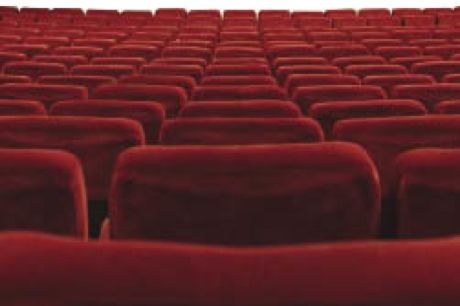
Think back to the last film you watched in a cinema. Was it a major blockbuster, or a small, independent release? Have you seen many of David Lynch’s films? Would you call them blockbusters or smaller, specialised films? This will help you to understand the somewhat arbitrary distinction between art house and mainstream cinema.
So what is art house cinema? It’s generally defined as an independent film aimed at a niche market, usually low budget, and serious in tone, with a carefully defined screenplay. It is not a mass appeal film, could be experimental, and has a strong aesthetic focus.
The history of art house cinema dates back to the silent era, when a number of expressionistic, boldly visual films were made, ranging from Germany’s The Cabinet of Dr.Caligari (1919), to Sweden’s The Passion of Joan of Arc (1928), to Russia’s Battleship Potemkin (1925), to Spain’s Un Chien Andalou (1929) and L’Age D’Or (1930), to France’s Entr’acte (1924).
These were all very distinctive, specialised films, using cinema in experimental and challenging ways. As sound developed in the cinema, filmmakers lost some of their art house trends in favour of making more commercial films. Jean Renoir’s classic symbolic film Rules of the Game (1939) demonstrated an art house approach to a standard anti-war story, while in 1961 Alain Resnais played with narrative structure and form in Last Year in Marienbad. From Italy, films like Rome-Open City (1945) and The Bicycle Thieves (1948), presented social issues in a neo-realist way to post-war audiences.
French New Wave directors like Truffaut, Chabrol and Rohmer deliberately broke out of the standard narrative shackles, questioning the usual approach to storytelling in the cinema. Ingmar Bergman’s deeply expressionistic films explored psychological concerns without compromising for mainstream audiences.
Applying the art house definition, a number of films and filmmakers fit this criteria. Terrence Malick’s films are certainly art house: from the slow-burn murder spree in Badlands (1973), to the brooding romanticism of Days of Heaven (1978). Then there’s the trenchant anti-war philosophy of The Thin Red Line (1998), the contemplative early discoveries of America by the British in The New World (2005), the metaphysical exploration of existence in The Tree of Life (2011) and the melancholic look at an evolving relationship in To the Wonder (2012). Malick’s films are uncompromising, strongly visual, interior in tone, and certainly not designed for a mass audience.
Directors like Gus Van Sant, Andrei Tarkovsky, Wim Wenders, Rainer Werner Fassbinder, John Cassavetes, Wong Kar Wei, Bela Tarr and Nicholas Winding Refn have produced films that would not be regarded as mainstream and certainly have art house sensibilities. Indeed, Refn’s art house action film, Drive (2011), is a strongly visceral film that defies the usually action director’s approach.
Two of the best recent Australian films, The Rocket (2013), Kim Mordaunt’s beautifully observed film about a young boy and a family curse set in Laos, and Robert Connolly’s (with 17 other directors) innovative filming of the chapters of Tim Winton’s book The Turning (2013), are both specialised art house films that have managed to find broader audiences, thus defying our usual understanding of what an art house film is.
Peter Krausz is former Chair of the Australian Film Critics Association, hosts a weekly three-hour film program on Melbourne radio, and is a film festival consultant, film critic and film journalist. He can be contacted via peterkrausz8@gmail.com







































































































































